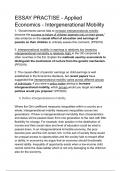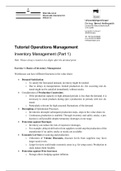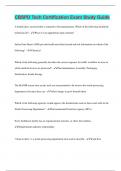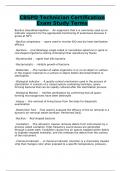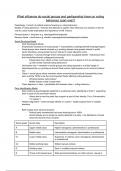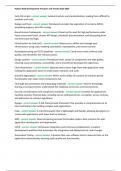Economics - Intergenerational Mobility
1. “Governments cannot help to increase intergenerational mobility
because the success or failure of children depends only on their genes.”
Use evidence on the causal effect of education and earnings of
parents on their children to critically assess this comment. (PP2018)
3. Intergenerational mobility in earnings is relatively low (meaning
intergenerational immobility is relatively high) in the UK compared to
other countries in the EU. Explain the methods used by economists to
distinguish the mechanism of nurture from the genetic mechanism.
(PP2019)
2. The causal effect of parents’ earnings on child earnings is well
established in the Economics literature, but recent papers have
suggested that Intergenerational mobility varies across different groups
of individuals. If you were a policy maker aiming to increase
intergenerational mobility, which groups would you target and what
policies would you propose? (PP2020)
1) Define Intergenerational mobility.
Where the Gini coefficient measures inequalities within a country as a
whole, intergenerational mobility measures inequalities across two
generations. If there is intergenerational immobility then characteristics
and status will be passed down from one generation to the next with little
flexibility for change. For example, their position in the distribution of
income and their social class and level of education could be what is
passed down. In an intergenerational immobile economy, the poor
become poor and the rich remain rich. In this sort of society there would
be unequal access to opportunities and the society fails to reward effort
or ability. In economics we argue that an economy should functionally
reward ability. Inequality of opportunity exists when a low-income child
cannot climb the class ladder which is not only damaging to the child but
also for the economy.
, 2) Define the main model for this topic.
Blanden, Gregg and Macmillan (2007):
The equation we want to estimate for intergenerational mobility is:
𝑙𝑜𝑔 𝑦𝑐 = α + β𝑙𝑜𝑔 𝑦𝑝 + 𝑢
𝑦𝑐 is earnings of the child and 𝑦𝑝 is earnings of the parent, α, β are
parameters to estimate and the 𝑢 is the error term.
We can interpret β as an elasticity because it tells us the percentage
change in 𝑦𝑐 from a percentage change in 𝑦𝑝 .
(1-β) measures intergenerational mobility.
The causal parameter tells us by how much an exogenous change in 𝑦𝑝
drives 𝑦𝑐 .
If we consider education in this relationship and assume there is a high
correlation between the parent’s and child’s education. If there is a
causal effect here then we can convince the government, as policy
makers, to expand the education system. Similarly if we consider
earnings and income here and there’s a causal relationship then we can
instead target low-income and disadvantaged communities.
3) Is intergenerational mobility determined by nature or nurture?
Use an example of a study in your answer. (Adoptees)
In theory, socio-economic status may transmit across generations due to
genetics, for example, with the education system being assumed to
reward ability and hard work in society, innate ability could cause
intergenerational immobility. Economists have tested this theory using
the Adoptees study to separate nature and nurture to see if there is only
a causal link between genetics and socio-economic status.
… Adoptees study here
From lecture notes:
- For this study to estimate a causal effect, we require the adopted
child to be randomly assigned to the family so that the traits of the
adoptive parents are not correlated with the child’s unobserved
component of y.

